In Part 6c of this series on revelation we will continue to closely examine the evolution of the LDS temple worship. If you have not read Part 1 of this series, I highly recommend that you do so before reading this post (you can read it here). And if you haven’t read Part 6a in the Temple portion of this series, click here to read it and for Part 6b click here before you continue. The point of the posts in the revelation series is to show how culture, bias, and worldview affect the way revelation or inspiration is interpreted. We pick up on the timeline with the Richards committee era in the temple evolution all the way to the present day.
Most of the information I present here is from a well-written book, “The Mysteries of Godliness, A History of Mormon Temple Worship,” by David John Buerger. I highly recommend it! Unless otherwise noted, all references come from his book.
1924 – St. George temple president David H Cannon balked at changes the formed Richards Committee suggested, claiming he (David) had the original endowment given from Brigham Young. Cannon was told to burn the old rulings or send them to SLC (pg 139).
30 January 1926 – President Grant issued a letter restricting second blessings or anointings to only those recommended by the President of the Church or Council of the Twelve (pg 157).
1927 – The First Presidency issued a letter with changes to the endowment (I’m only listing a few changes from the extensive list):
- Avenging the blood of the prophets was omitted
- Kissing when sealing the dead was omitted (but ok when doing non-proxy work)
- Language of penalties was tempered (pg 140-141)
6 April 1927 – Recommends for second anointings were stressed again – only those that received a recommendation from the President or the Twelve qualified for the second anointing (pg 157).
27 August 1927 – The Presidency affirmed that they did not want to use motion pictures in the ceremony (pg 166).
1928 – The Word of Wisdom obedience became mandatory for admission and full membership (The Word of Wisdom: From Principle to Requirement”, Dialogue: A Journal of Mormon Thought, pg 5).
1930 – Under President Heber J. Grant’s administration, second anointings decreased dramatically, becoming practically non-existent (pg 155).
1934 – George F. Richards head of the Richards Committee wrote a letter to President Grant to increase the number of second anointings being done. He listed five general authorities that hadn’t received their second anointings. He wrote: “I understand that it is in order for a member of the council of the Twelve to recommend worthy members to the President of the Church to receive their Second blessings. Accordingly, I recommend that these brethren and their wives be invited to receive their blessings.” (pg 160-161)
22 April 1936 – The Richards Committee clarified the meaning of the symbols in the garment. They also left to judgment of the person to remove the garment if the wearer thought that the garment would be exposed to an “unbeliever or scoffer”. They also recommended that merchants not advertise the LDS garment. And they also recommended that only those who were endowed or authorized could put the markings on the garment (pg 153-154).
1930-40 – During the Great Depression, members could pay people to perform endowments for the dead. Members who did not have time to perform ordinances for deceased ancestors customarily paid 75 cents for men and 50 cents for women per ordinance (pg 155).
December 1942 – George F. Richards saw President Heber J. Grant privately. President Grant gave permission to Richards to issue recommends for all of the General Authorities and their wives for second anointings (pg 161).
12 August 1949 – Richards was still frustrated with the small number of second anointings being issued. Richards stated: “Ordinances without which we cannot obtain Celestial thrones.” He also noted that from 1930 to 1942: “Eight such blessings were administered in the Church”. He recommended that temples under construction now and in the future should have a room for the administrations of these blessings alone, to be called the Holy of Holies (pg 163).
Note: Second anointings are still performed today, but on a very small scale. They are not considered a requirement for exaltation. You must be recommended to receive one today. They are “for a limited number of proven, trustworthy older men and women and the upper levels of an elite, insular hierarchy” (pg 164).
1953 – President David O. McKay asked Gordon B. Hinckley to chair a committee to create an endowment presentation for the new one-room Swiss temple. The outgrowth was a 16-millimeter film directed by Harold I. Hansen, filmed mostly in the upper room of the Salt Lake temple and shot over a period of one year. Due to inclement Utah weather, outside photography was done in the southern United States, while lava-flowing scenes accompanying the Creation portion came from Walt Disney Studios, which granted permission to use 350 feet from the film Fantasia. Different casts were used for the different languages, which included English, German, French, Dutch, Danish, Swedish, Norwegian, and Finnish (pg 166-167).
1954 – More casts were brought on to film for Samoan, Tahitian, Tongan, and Maori for the use in the New Zealand temple. Casts really didn’t act, and there was no real sophistication to the scenes; the temple workers simply enacted a live endowment session (pg 167).
1950-60s – The Church’s computer planning committee realized that given the estimated 70 billion people who have been born on the earth, all LDS adults working in temples eight hours a day, seven days a week would not be able to keep up with world population growth, much less complete ordinance work for deceased ancestors.
Early 1960s – American movies influenced Harold Burton, the architect of the Oakland temple. He planned huge projection areas that required the use of 35-millimeter film (pg 167).
1961 – A shortage of names for vicarious work prompted President David O. McKay to have the Genealogical Society provide names. To date, 70% of the names used in the temple have come from the Genealogical Society (pg 170).
1964 – The Oakland temple was dedicated. Slide projectors (4”x5”) were used to produce photomurals depicting room changes found in the live endowment presentations (pg 167).
1966 – The second film for the endowment session was produced. Due to space limitations in the Salt Lake temple, the First Presidency authorized this production (known as Project #100) to take place in the motion pictures studio on the campus of BYU (pg 167).
24 April 1966 – A new studio stage constructed for Project #100 was completed (pg 167).
Oct-Nov 1969 – A third film, known as Project #134, was put in production to try to shorten the length of the ceremony. The cast included both professional and amateur actors. Actors and film crews were required to have temple recommends. It was filmed between the hours of 10 pm and midnight to ensure privacy. Actors could not take lines home and were required to memorize their lines in a room just off the set. Prompt cards were also used (pg 168).
November 1971 – The third film was completed. Because it was in fact shorter, it replaced the second film (pg 168).
1972-73 – Despite initial opposition by Harold B. Lee and Joseph Fielding Smith in what they perceived as “doctrinal tampering,” vicarious ordinances were permitted to be performed out of their traditional order.
Mid-1970s – President Harold B. Lee was uncomfortable with the long hair and beards of a few of the cast members in the third film so a fourth film was put into production (Project #198). It had the same director, but a predominantly new cast. Also, a major goal for this production was to create foreign sound tracks that did not look obviously dubbed without re-filming. Theological concerns required translations to be literal in nature. Voice actors for different languages were all native (pg 168).
Note: According to the actor who portrayed the minister in the third-filmed version, the role of Satan was to have been filled by an African-American originally, but due to protests by LDS Polynesians, a Caucasian filled the role (pg 169).
1975 – The pre-1923 garment is no longer required to be worn in the temple (pg 154).
Early 1976 – The temple committee transferred all endowment film and sound operations from BYU to the Salt Lake Temple basement. Film was processed in a California lab (pg 169).
Note: Both the 3rd (Project #134) and 4th (Project #198) film were used for two decades. Reportedly, the third film was not phased out as soon as expected because people preferred it over the fourth film (pg 169).
1979 – A two-piece garment was made available. It was received with much enthusiasm. (Arthur, Linda B. (1999), Religion, Dress and the Body, Berg Publishers, ISBN 1-85973-297-6)
April 1990 – Following several in-house studies, including a national survey of some 3,400 members, a number of changes were implemented to soften the ritual’s treatment of women and non-Mormon clergy, use of Masonic elements, and violence of the penalties (pg 170).
January 2005 – Changes were made to the washing and anointing (initiatory) portion of the endowment: instead of wearing just an open shield, garments began to be worn along with the shield. Additionally the sides of the shield were sown shut.
Comparing the most recent changes in 2005, we can look back and really see how the temple ceremony has evolved since its beginning – originally the washing was performed in a bathtub where the temple patron was literally bathed. “The earliest accounts of the Nauvoo temple endowment indicate that initiatory washings followed a literal Old Testament model of actual bathing. Large tubs of water are specified in the separate men’s and women’s rooms. The anointing was performed by liberally pouring consecrated oil from a horn over the head and allowing it to run over the whole body.” (pg 81)
So what do these changes mean? What does it mean when the leadership performs a survey to find out what needs to be changed? I believe that God uses a system to communicate with us. And using humans to do His work comes with a certain cost. “Things that fall from heaven are still colored by earth” (John Dillenberger Professor Emeritus of Historical Theology at the Graduate Theological Union in Berkeley, California)
For me, a quote from Terryl Givens concludes this series on the temple beautifully and much more articulately than I could ever hope to:
Sure it’s [Joseph using Masonic ritual in the temple endowment] plagiarism. All great poetry is plagiarism. And all great religion is plagiarism. Especially in the Mormon conception of things, because it’s not possible to create anything new. Right? It was all known to Adam. There’s this “ere-gospel” that we are all trying to reach back and grope towards and reconstitute in its entirety and fullness. So, if that’s the paradigm you begin with, then there is no such thing as novelty or innovation in religious thought. We are just trying to recuperate. There are other people like, Michael Smith is one, who are doing really interesting work on the influence of Masonry on early Mormonism. I certainly don’t know the full story.
You know, I’m reminded of a priest that I used to work with who came back from a Mass he just celebrated where he used beer for the wine and potato chips for the wafer. I remember at the time I thought that was a little bit over the top and blasphemous. To some extent, maybe it was. But, the point he was trying to make to his congregation was, it doesn’t matter what symbols we use, it doesn’t matter. We could re-write the temple ritual tomorrow and use Boy-Scout signs and handshakes, and it wouldn’t matter. It’s so immaterial – what are the actual, physical aspects of the ritual that we go through in the temple. Joseph found Masonic ritual adaptable in ways that suited his purposes. He seemed to think that the Masonic ritual was an actual, if corrupted inheritance from an ancient endowment. Now, the best scholarship today believes that Masonry is a fairly late invention out of whole cloth in the 17th century. Right? I don’t know where Masonry comes from. I don’t know what its relationship is to an original Adamic endowment and I don’t care. Because I don’t go to the temple because I believe that the actual ritual I am engaged in has any inherent value. What has value, are the covenants that we make, the promises that we receive, and the relationships that are eternalized. So, I just say, well, bravo to Joseph Smith for finding this system that was quick and readily adaptable to his purposes.
It’s [Masonry] is the delivery system and the delivery system is immaterial. I don’t care what hypodermic needle you use as long as you have the right antidote in it. (Terryl Givens, Mormon Stories Podcast, episode 292, 59:00)
Additional resources:
Interview with a Master Mason/Mormon on Mormon Stories
Mysteries of Godliness on Amazon
Mormonism and Freemasonry FAIR
Mormonism and Freemasonry Mormon Expression Podcast


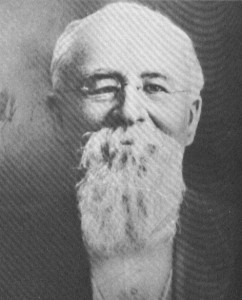
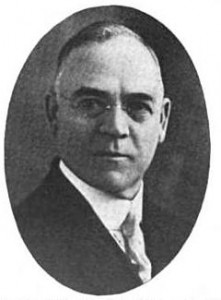
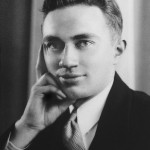
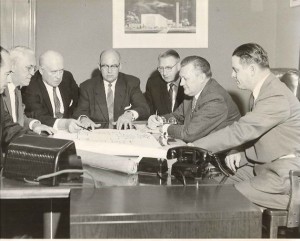
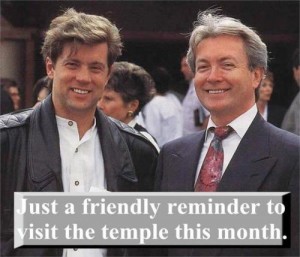



Paul, would you please define Revelation Bias for me. Thanks.
This is what I put on the first post of this series:
Click here to read the full post
To receive revelation from God, there must be a human involved and any time you get humans involved with anything there is a filter – a human bias, for good and for bad. While being interviewed, Richard Bushman, author of Rough Stone Rolling and also stake patriarch, lamented that it was more difficult to bless his family members than it was to bless total strangers when giving a patriarchal blessing. Why? Because in giving a blessing to a family member he wanted the absolute best for them. So, it seemed to be more Richard speaking than inspiration. Anyone that has given a baby blessing or any other blessing can relate to this at some level I think.
Do we have errors even when we are dealing with godly matters? Absolutely. We are human, that’s what we do! As humans, we obviously lack the capacity to fully grasp heavenly concepts. I imagine the all-knowing God has to “dumb down” his communication quite a bit, or even just give us bits at a time in order for us to begin to understand his will “according to our language, unto our understanding” (2 Ne. 31:3). God accommodates us by speaking to our level of understanding. How much would he reveal to someone in Africa vs. someone in Mexico or Germany? Would he package the message differently? I would argue yes. I think culture, language, understanding, and education could definitely be some of the factors that influence what is revealed, how it is revealed and how much is revealed.
What it sounds like you’re saying is that it’s difficult (if not impossible) to tell the difference between what might actually be revelation (from God) and something that is only perceived or interpreted to be revelation (a feeling, intuition, or an impression—which people experience all the time). There seems to be no sure reference point or dependable external and independent guideline as to what is potentially legitimate revelation– and therefore it’s up to the receiver of any alleged revelation to determine or judge or interpret whether he or she has actually been the recipient of genuine revelation. You used the example of the person who said it’s harder to give a blessing to a family member than to a stranger because of personal feelings that might potentially interfere with the receipt of inspiration (revelation). I think that just proves the above point. Unless there’s a way to always differentiate between feelings, impressions, and human intuition and actual revelation, then the idea of revelation (from God) is itself incoherent and impossible to rely upon as an acceptable and verifiable source of knowledge, doctrine, instruction,blessing, etc. Does that make sense?
Brent,
I think you bring up a very fair and valid critique of how epistemology is presented in our popular LDS culture. It is something with which I struggle; there have been very few (I can only think of one or two times) clear “spiritual experience/prompting” which I can actually say, “Yes, that came from something outside of me.”
I would also argue that just like our interpretations of divine promptings is fallible, so are other ways of epistemology: ie rationale, intuition, even the scientific method.
Regarding “revelation” or “spiritual promptings”, my reference point is in asking myself, “Does this point to virtue, goodness, love?”
All in all, where I have landed, for right now, in approaching what I have experienced within the context of the LDS church and with the divine, is doing it with much more humility than I have in the past and allowing other people “spiritual experiences” that may actually directly contradict mine; I am much more comfortable with ambiguity and less comfortable with certainty.
Many are just trying to respond to the divine with which we have been touched, but we do so imperfectly. I do it imperfectly, my dad did it imperfectly, and Joseph Smith certainly did it imperfectly. It seems to me that there has to be evidence to believe as well as not to believe – otherwise the choice to believe would not in fact be a free choice. Wherever people land based on how they interpret the evidence, I must respect and I hope I would be granted the same deference.
I have no problem with inspired work from art, music, literature to inspired words. I have an issue and battle with sentences that start out by saying “and God said”.
I am just shocked that they had to pay to do baptisms for the dead. What the heck. Ok really we don’t even know our own history. Next time someone brings up indulgences this is going to be brought up.
So strange!! Maybe we should home teaching this way too!!
How do you justify the changes in the endowment ceremony when we so often point to the transition to “sprinkling” as a mode of baptism as a sure-fire sign of Early Christian Church apostasy? That’s something I’ve always wrestled with in my mind.